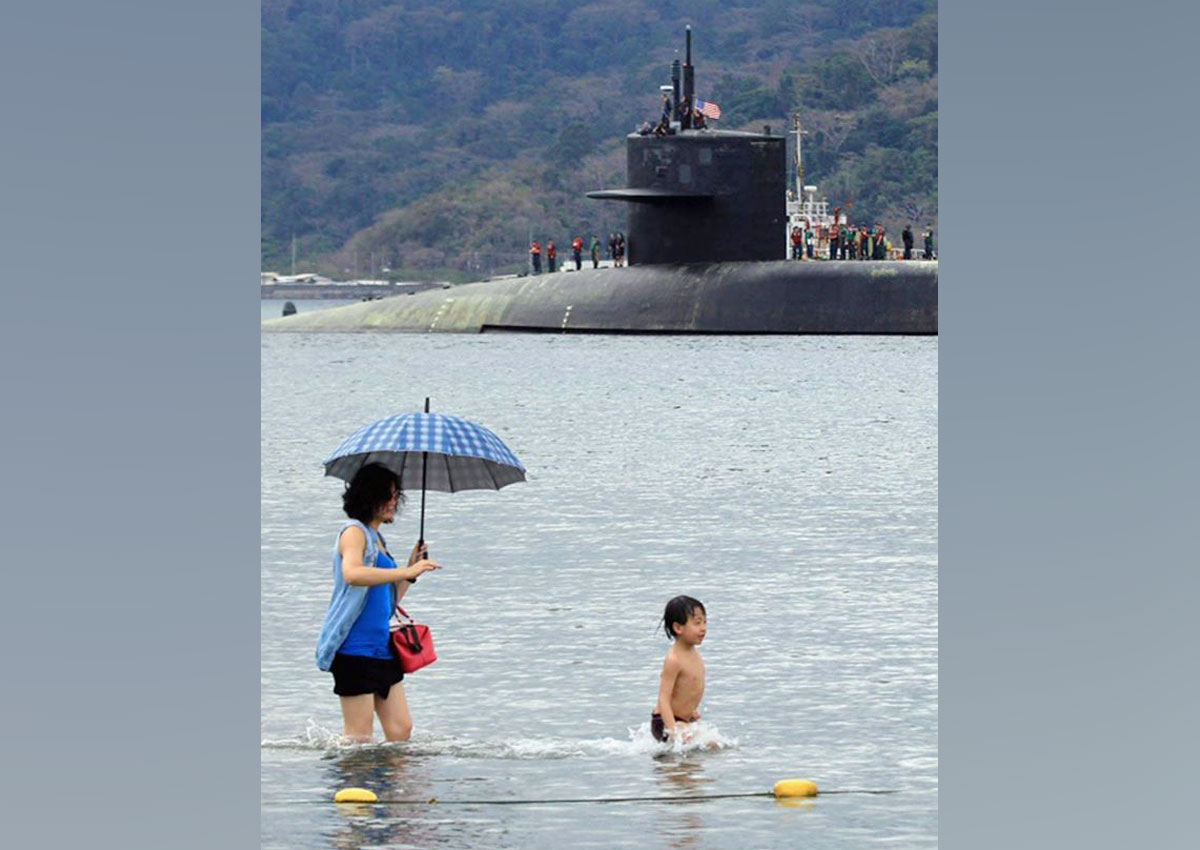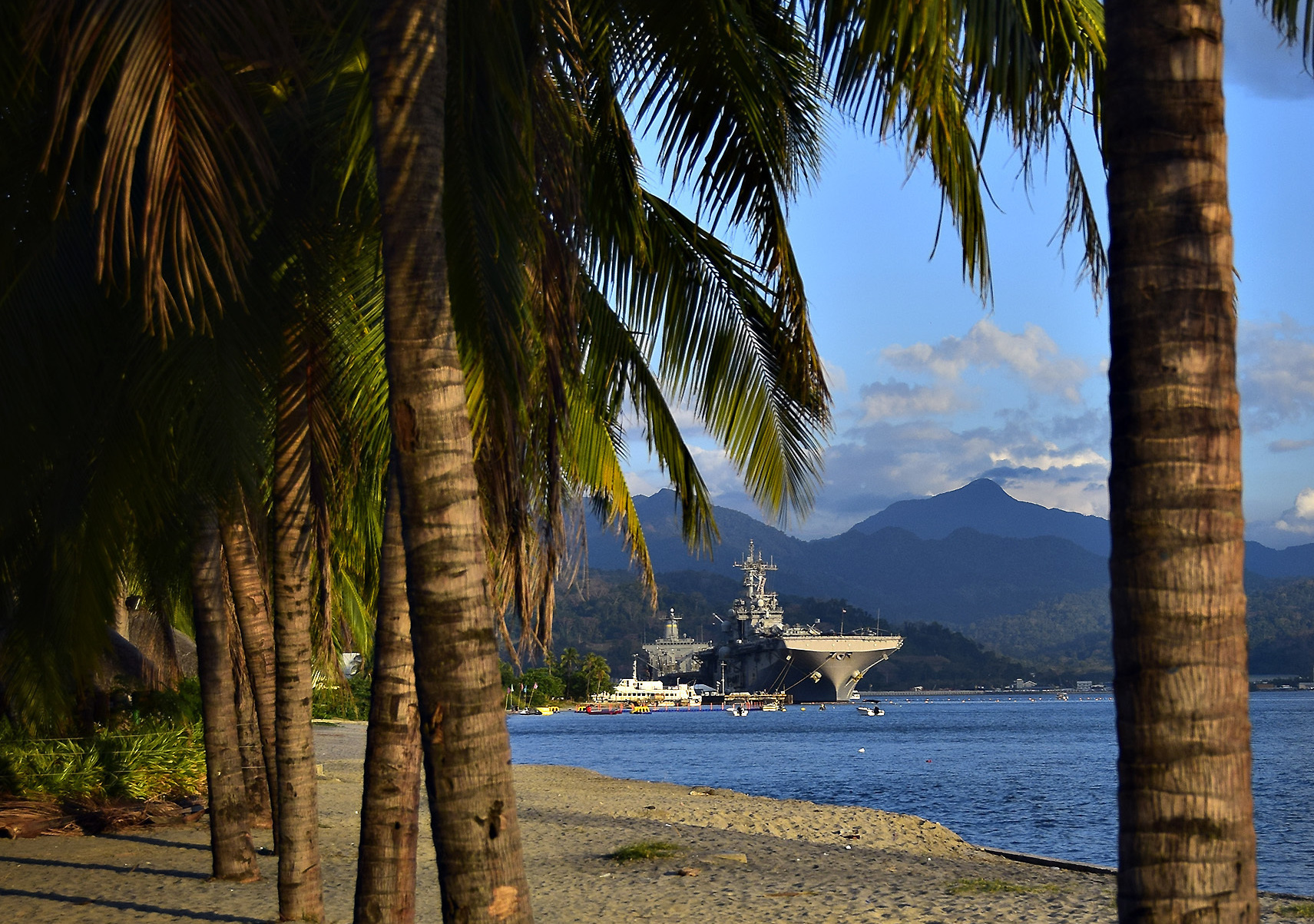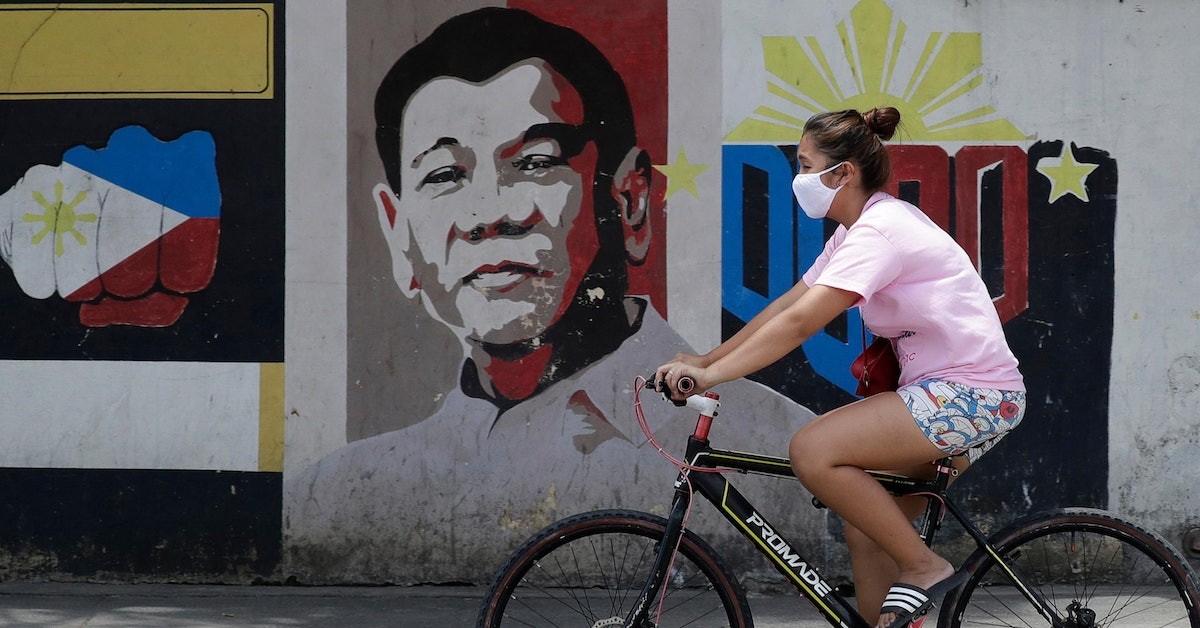MANILA (PHILIPPINE DAILY INQUIRER/ASIA NEWS NETWORK) - The Philippine Navy is opposing a plan by the government of Cavite, a populous province on the southern shores of Manila Bay, to boot the military service command out of Sangley Point in the province as part of a 500-billion peso (S$14 billion) airport project that is expected to ease congestion at Ninoy Aquino International Airport (Naia) in neighbouring Manila.
Vice Admiral Giovanni Carlo Bacordo, the Navy's flag officer in command, cited particularly the involvement in the project of China Communications Construction Co (CCCC), one of the Chinese companies recently banned by the United States for its alleged role in the illegal construction of artificial islands on maritime features in the South China Sea, including the West Philippine Sea within the Philippines' exclusive economic zone.
The proposed Cavite-initiated Sangley Point International Airport (SPIA) is a joint venture between CCCC and Taipan Lucio Tan's MacroAsia Last week, President Rodrigo Duterte gave the green light to US-blacklisted Chinese firms to participate in the Philippines' infrastructure programs.
Bacordo said the reported role of CCCC in the militarisation of the South China Sea had raised eyebrows among retired and active security officials over the SPIA project.
They want to keep the Navy's presence at the strategically located Sangley Point, a former US naval base, he said.
"All the more we want to remain there so to ensure that there are no security violations," he told Inquirer.net over the weekend.
STRATEGIC POSITION
Sangley's location also allows the Navy, the military's naval warfare service branch, to conduct surveillance operations and use it as a staging point.
"It is guarding the entrance to Manila Bay and Manila Bay is the centre of gravity of the national government. If Manila falls, the whole country falls," Bacordo said.
"We want to remain there because we want to guard the entrance to Manila Bay."
But while the Navy is firmly against the plan to be evicted out of Sangley, Bacordo clarified that it was not against the SPIA project itself.
"The project can go on... We can coexist in Sangley without necessarily booting us out," he said.
He declined to comment on the Philippine government's deals with Chinese firms for its flagship infrastructure projects, saying it was "beyond the purview" of the Navy.
In February, Duterte inaugurated Sangley airport, which boasts of a 2.4km runway that would be used for general aviation and turboprop cargo operations.
Construction of new facilities, such as a passenger terminal building, hangars and drainage system, started in late 2018.
In June 2019, the President ordered the immediate transfer of domestic flight operations to Sangley Point after a lightning storm delayed and diverted domestic and international flights of thousands of passengers in Naia.
SPOTTY RECORD
In October last year, the airport started its operational dry run and had its maiden cargo flight.
The CCCC's spotty record has also raised questions about the propriety of allowing its participation in the major infrastructure plan.
The World Bank had previously banned the CCCC and its subsidiaries due to fraudulent practices, according to several reports.
Citing sources involved in the bidding of the SPIA project, the Inquirer reported in January that the bidding process had favoured CCCC from the very start, but Malacañang and the Cavite government played down the allegations.
CANACAO BAY RECLAMATION
Immediately after the recent US announcement on its trade blacklist of Chinese companies linked to China's island-building in the South China Sea, Foreign Secretary Teodoro Locsin Jr said he would recommend the termination of government contracts with these firms but later backpedalled after the President decided to push through with the infrastructure projects.
The Navy is also concerned about the SPIA plan to reclaim almost 75 per cent of Cañacao Bay, the site of the Battle of Manila Bay during the Spanish-American war.
The Cavite provincial government said it would pursue a proposal to transform the gateway into a US$10-billion (S$13 billion) international air hub.
This will include a massive land reclamation component and will be partly funded by Chinese companies.
"Instead of them going south of 1898 Avenue and reclaiming Cañacao Bay, why won't they reclaim the northward site so everything south of 1898 Avenue will still be occupied by the Navy?" Bacordo said.
Because of its historical importance, he said the bay "should be dredged and preserved in its entire glory" instead of reclaiming it.
"During the time of the Americans, large ships could enter and dock there," he said.
The Philippine Navy's vital facilities - the Philippine Fleet, Naval Sea Systems Command and the Naval Installation Command - are all stationed at Sangley Point.
Some Navy personnel and their families also live in a community nearby.
Based on the initial development plan released by the Cavite government, the Philippine Navy is completely out of the picture.
"If you look at the plan for SPIA, they will cover the whole of Sangley, plus they will reclaim about three-fourths of Cañacao Bay," he said.
He added: "We are really not there from their perspective."
In December last year, Cavite Governor Jonvic Remulla said he would propose that the Philippine Air Force "co-use" the SPIA to ease security fears. He made no mention of the Philippine Navy.
POSITION PAPER
Bacordo said the Navy had submitted a position paper to the Armed Forces of the Philippines and the Department of National Defence in March to formalise its stand on the SPIA project.
"The AFP chief of staff favourably endorsed the paper to the SND (Secretary of National Defence) and the SND agrees with the position of the AFP," he said.
Defence Secretary Delfin Lorenzana later authorised the Navy to hold consultations with the Cavite government, Bacordo said.
An initial online discussion between the Navy and the provincial government took place in August, but the issues have not yet been fully resolved.
"Before this Covid-19 pandemic, we were supposed to sit down, but it never happened… I'm looking forward to fruitful discussions that started in August," the Navy chief said.
He reiterated that the command was not against the SPIA project.
"We just want a win-win solution. Leave something for us for the Navy," he said.

 www.straitstimes.com
www.straitstimes.com
Vice Admiral Giovanni Carlo Bacordo, the Navy's flag officer in command, cited particularly the involvement in the project of China Communications Construction Co (CCCC), one of the Chinese companies recently banned by the United States for its alleged role in the illegal construction of artificial islands on maritime features in the South China Sea, including the West Philippine Sea within the Philippines' exclusive economic zone.
The proposed Cavite-initiated Sangley Point International Airport (SPIA) is a joint venture between CCCC and Taipan Lucio Tan's MacroAsia Last week, President Rodrigo Duterte gave the green light to US-blacklisted Chinese firms to participate in the Philippines' infrastructure programs.
Bacordo said the reported role of CCCC in the militarisation of the South China Sea had raised eyebrows among retired and active security officials over the SPIA project.
They want to keep the Navy's presence at the strategically located Sangley Point, a former US naval base, he said.
"All the more we want to remain there so to ensure that there are no security violations," he told Inquirer.net over the weekend.
STRATEGIC POSITION
Sangley's location also allows the Navy, the military's naval warfare service branch, to conduct surveillance operations and use it as a staging point.
"It is guarding the entrance to Manila Bay and Manila Bay is the centre of gravity of the national government. If Manila falls, the whole country falls," Bacordo said.
"We want to remain there because we want to guard the entrance to Manila Bay."
But while the Navy is firmly against the plan to be evicted out of Sangley, Bacordo clarified that it was not against the SPIA project itself.
"The project can go on... We can coexist in Sangley without necessarily booting us out," he said.
He declined to comment on the Philippine government's deals with Chinese firms for its flagship infrastructure projects, saying it was "beyond the purview" of the Navy.
In February, Duterte inaugurated Sangley airport, which boasts of a 2.4km runway that would be used for general aviation and turboprop cargo operations.
Construction of new facilities, such as a passenger terminal building, hangars and drainage system, started in late 2018.
In June 2019, the President ordered the immediate transfer of domestic flight operations to Sangley Point after a lightning storm delayed and diverted domestic and international flights of thousands of passengers in Naia.
SPOTTY RECORD
In October last year, the airport started its operational dry run and had its maiden cargo flight.
The CCCC's spotty record has also raised questions about the propriety of allowing its participation in the major infrastructure plan.
The World Bank had previously banned the CCCC and its subsidiaries due to fraudulent practices, according to several reports.
Citing sources involved in the bidding of the SPIA project, the Inquirer reported in January that the bidding process had favoured CCCC from the very start, but Malacañang and the Cavite government played down the allegations.
CANACAO BAY RECLAMATION
Immediately after the recent US announcement on its trade blacklist of Chinese companies linked to China's island-building in the South China Sea, Foreign Secretary Teodoro Locsin Jr said he would recommend the termination of government contracts with these firms but later backpedalled after the President decided to push through with the infrastructure projects.
The Navy is also concerned about the SPIA plan to reclaim almost 75 per cent of Cañacao Bay, the site of the Battle of Manila Bay during the Spanish-American war.
The Cavite provincial government said it would pursue a proposal to transform the gateway into a US$10-billion (S$13 billion) international air hub.
This will include a massive land reclamation component and will be partly funded by Chinese companies.
"Instead of them going south of 1898 Avenue and reclaiming Cañacao Bay, why won't they reclaim the northward site so everything south of 1898 Avenue will still be occupied by the Navy?" Bacordo said.
Because of its historical importance, he said the bay "should be dredged and preserved in its entire glory" instead of reclaiming it.
"During the time of the Americans, large ships could enter and dock there," he said.
The Philippine Navy's vital facilities - the Philippine Fleet, Naval Sea Systems Command and the Naval Installation Command - are all stationed at Sangley Point.
Some Navy personnel and their families also live in a community nearby.
Based on the initial development plan released by the Cavite government, the Philippine Navy is completely out of the picture.
"If you look at the plan for SPIA, they will cover the whole of Sangley, plus they will reclaim about three-fourths of Cañacao Bay," he said.
He added: "We are really not there from their perspective."
In December last year, Cavite Governor Jonvic Remulla said he would propose that the Philippine Air Force "co-use" the SPIA to ease security fears. He made no mention of the Philippine Navy.
POSITION PAPER
Bacordo said the Navy had submitted a position paper to the Armed Forces of the Philippines and the Department of National Defence in March to formalise its stand on the SPIA project.
"The AFP chief of staff favourably endorsed the paper to the SND (Secretary of National Defence) and the SND agrees with the position of the AFP," he said.
Defence Secretary Delfin Lorenzana later authorised the Navy to hold consultations with the Cavite government, Bacordo said.
An initial online discussion between the Navy and the provincial government took place in August, but the issues have not yet been fully resolved.
"Before this Covid-19 pandemic, we were supposed to sit down, but it never happened… I'm looking forward to fruitful discussions that started in August," the Navy chief said.
He reiterated that the command was not against the SPIA project.
"We just want a win-win solution. Leave something for us for the Navy," he said.

The Straits Times - Breaking news, Singapore news, Asia and world news & multimedia
The Straits Times - Get latest breaking news, business, sports, lifestyle, tech & multimedia and more news in Singapore, Asia & rest of the world at straitstimes.com.






